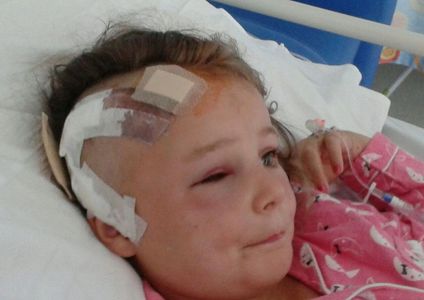Signed in as:
filler@godaddy.com
Signed in as:
filler@godaddy.com

To fracture a child's skull takes intense pressure; however, some children's skulls may be weak, which may be due to the skull not being fully developed or a previous injury that has weakened the skull.

There are a number of fractures to identify; a hairline fracture may be difficult to identify compared to an open fracture, where bone and membrane may be exposed.
The cheekbone and jawbone also form part.
The skull has to be carefully treated
To prevent further damage.

A broken nose can be extremely painful. The nose may bleed. Do not attempt to pinch the nose; instead, use a cold flannel and allow the child to hold it on their nose. Remember, the nose is a part of the skull, and the child will need medical care.

When the child is conscious, there will be indicators that the child has a possible skull fracture.
When the child is unconscious, it becomes more
difficult to identify the injuries, this is where your
TOP-TO-TOE comes in. Gently feel across the child's skull, looking for:

Where there is serious trauma or impact to a child's body, you must suspect spinal injury. While the child is conscious, there may be indicators
When the child is unconscious, we must assume spinal injury, where there is severe trauma, for example:
Remember!
Build up the picture of what has happened.
Only move the child into the recovery

1. Call 999/112
2. If conscious, lay them down and raise their head and shoulder.
3. If Unconscious, leave them in the position you found them, or place them in a recover position
should you have to leave them or they vomit.
4. Treat for blood loss
5. If fluids are coming from the ears, i.e, blood or cerebral fluids(Clear and watery), then lightly apply y sterile dressing over the ears.
Do Not Block Ears.
6. Remember to assess for other injuries before moving the child.
7. No drinks or food.
Take your time as you go through this assessment. Read the question as some have more than 1 answer. This assessment requires you to score 7 out of 10. Your score will appear at the end of the assessment, you can check your answers, and an email will be sent to you and Life Lines of the results
GOOD LUCK